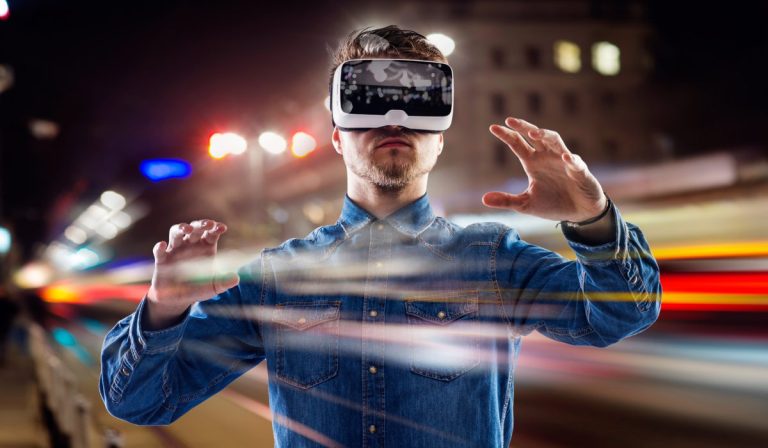
Despite years of hype and billions in research and development, people still have difficulty seeing augmented reality (AR) and virtual reality (VR) goggles as a viable consumer product.
It’s core to the wider discussion about how consumers will (or won’t) want to experience the metaverse, of which PYMNTS’ Karen Webster said in a Monday (March 27) column, “Most people — as in mostly all of them — don’t want to give up the physical world to live mainly via avatars in a virtual one. Even though most — as in mostly all of them — very much want to use technology to improve their interactions with people and businesses in the physical world where they live right now.”
Read: How Facebook Turned the Metaverse Into a Buzzword
Showing the indecision and uncertainty around AR/VR experiences, The New York Times revealed in a Sunday (March 26) story that, as Apple prepares to release its mixed reality googles, said to be called Reality Pro, there’s serious doubt inside the tech giant itself.
“As the company prepares to introduce the headset in June,” the Times reported, “enthusiasm at Apple has given way to skepticism, said eight current and former employees, who requested anonymity because of Apple’s policies against speaking about future products. There are concerns about the device’s roughly $3,000 price, doubts about its utility and worries about its unproven market.”
Meta — Facebook’s 2021 name change meant to signal its new corporate focus on the metaverse and, by extension, the devices to experience it — has also scaled back its plans, laying off a reported 11,000 employees last year and cutting projects like its Portal smart display and plans for smartwatches.
Per the NYT coverage, Meta’s “experience has been humbling. It has sold about 20 million of its $400 Quest 2 headsets since 2020 and recently cut the price of the Quest Pro, its premium device, to $1,000 from $1,500 amid lackluster sales.”
Even so, the metaverse keeps commanding attention.
According to the January report “Enter the Metaverse: The Next Frontier of Digital Commerce,” a PYMNTS and Payoneer collaboration, “A growing cohort of global businesses is waking up to the metaverse’s possibilities, but many are just beginning to understand how to monetize the space. For companies entering this arena, countless questions still need to be answered: What is the value of products in an entirely virtual world? How can they enable payments for these virtual products? What barriers must they break down to win shoppers and drive sales?”
That forward-looking analysis doesn’t deal with the pricing or usability issues of AR/VR headsets now available or being developed by frontrunners Apple, Google and Meta, or doubts expressed about demand beyond gamers and design professionals in buying and using goggles in everyday life — especially spending their time and money via avatars in digital realms.
See also: Amazon Fashion and Snap Launch Virtual Try-on Feature for the Masses
Where AR/VR applications are getting traction is in virtual try-on technology being used by retailers from Zenni Optical to a Snap and Amazon Fashion partnership, with even Walmart getting in on the action with its “Be Your Own Model” feature.